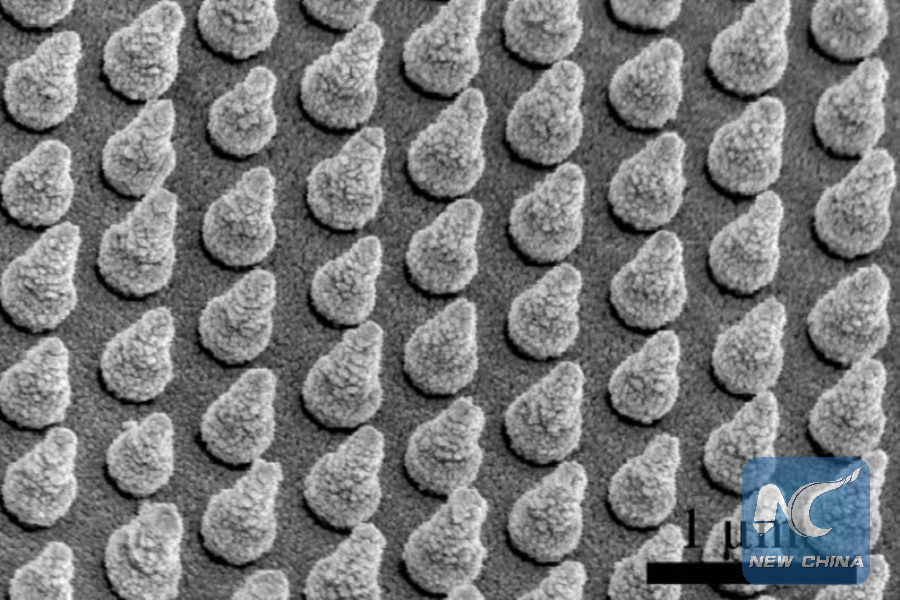
Stanford engineers created arrays of silicon nanocones to trap sunlight and improve the performance of solar cells made of bismuth vanadate. (Courtesy of Stanford News)
SAN FRANCISCO, June 20 (Xinhua) -- A team of Stanford University researchers has developed new ways to make hydrogen fuel from water by using bismuth vanadate, an inexpensive compound that absorbs sunlight and generates modest amounts of electricity.
Cui, associate professor of materials science and engineering at Stanford, and his colleagues have focused on photovoltaic water splitting that consists of a solar-powered electrode immersed in water. When sunlight hits the electrode, it generates an electric current that splits the water into its constituent parts, hydrogen and oxygen.
However, conventional solar electrodes made of silicon quickly corrode when exposed to oxygen, a key byproduct of water splitting.
That was the reason Cui's team optioned to work on bismuth vanadate. "Bismuth vanadate has been widely regarded as a promising material for photoelectrochemical water splitting, in part because of its low cost and high stability against corrosion," said Cui. "However, the performance of this material remains well below its theoretical solar-to-hydrogen conversion efficiency."
Bismuth vanadate absorbs light but is a poor conductor of electricity. To carry a current, a solar cell made of bismuth vanadate must be sliced very thin, 200 nanometers or less, making it virtually transparent. As a result, visible light that could be used to generate electricity simply passes through the cell. To capture sunlight before it escapes, Cui's team turned to nanotechnology. They created microscopic arrays containing thousands of silicon nanocones, each about 600 nanometers tall.
"Nanocone structures have shown a promising light-trapping capability over a broad range of wavelengths," Cui explained. "Each cone is optimally shaped to capture sunlight that would otherwise pass through the thin solar cell."
In the experiment, reported in the latest edition of Sciences Advances, Cui and his colleagues deposited the nanocone arrays on a thin film of bismuth vanadate. Both layers were then placed on a solar cell made of perovskite, another promising photovoltaic material.
When submerged, the three-layer tandem device immediately began splitting water at a solar-to-hydrogen conversion efficiency of 6.2 percent, matching the theoretical maximum rate for a bismuth vanadate cell. "The tandem solar cell continued generating hydrogen for more than 10 hours, an indication of good stability," said Cui, a principal investigator at the Stanford Institute for Materials and Energy Sciences. "Although the efficiency we demonstrated was only 6.2 percent, our tandem device has room for significant improvement in the future."
Hydrogen fuel has long been touted as a clean alternative to gasoline. Automakers began offering hydrogen-powered cars to American consumers last year, but only a handful have sold, mainly because hydrogen refueling stations are few and far between.
"Millions of cars could be powered by clean hydrogen fuel if it were cheap and widely available," said Cui.

